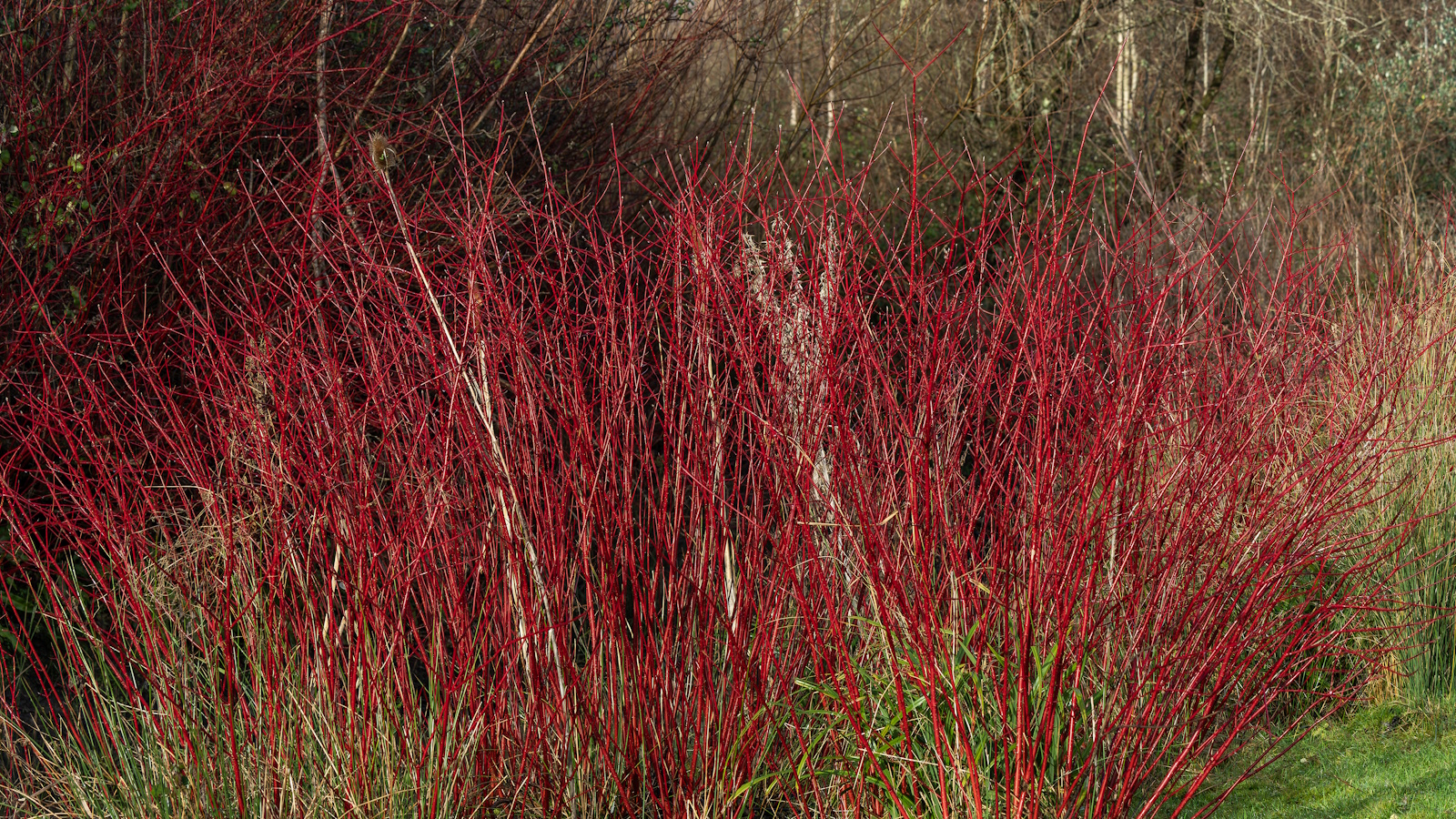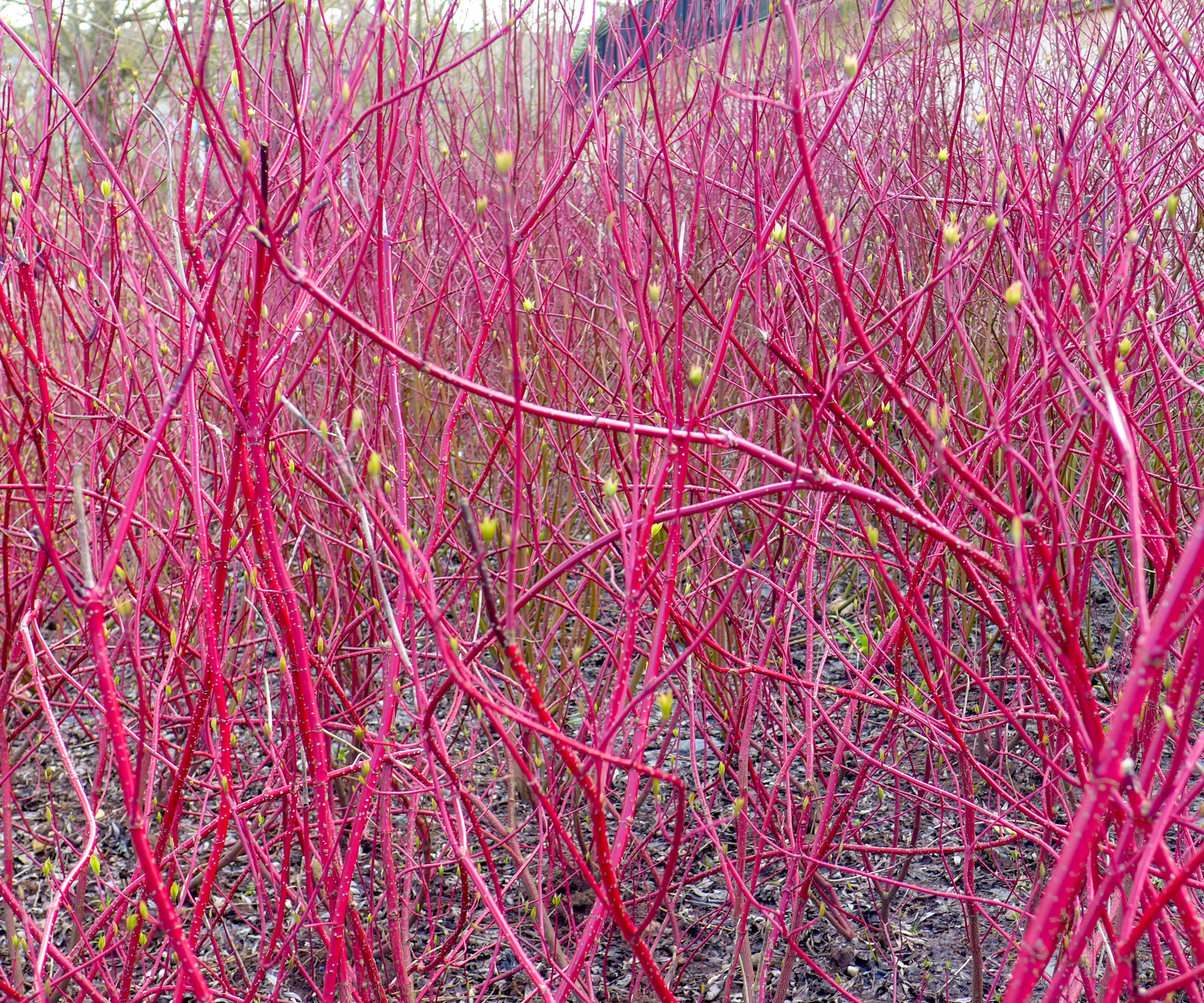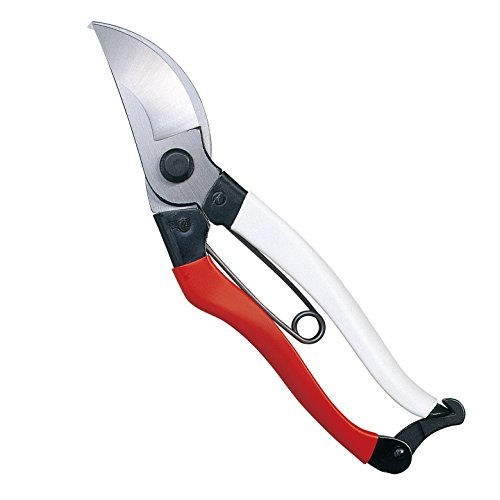When and how to prune red twig dogwood – to maximize its bold, fiery display next winter
Our expert-approved guide has all the information you need to know on when and how to prune red twig dogwood


Pruning red twig dogwood shrubs at the right time is essential if you want to maintain their vibrant glow. Young stems typically produce the brightest color, appearing in crimson shades during the dark and cold months of the year. As these stems age and weather, however, they naturally appear duller in color, making pruning an important job for anyone keen to maximize winter interest in their borders.
When left alone, red twig dogwood shrubs can reach upwards of 10 feet, making for a good hedge or boundary plant. Alternatively, you might grow one as a statement shrub in the border, which can look particularly impressive during the winter lull. Whichever shape or form you grow, pruning remains an important and timely job in the gardening calendar.
Here, one garden expert from Tennessee reveals how and when to prune dogwood trees, sharing the most strategic approach for red twig dogwoods to encourage fresh, vivid growth that will steal the show next winter.

How to prune red twig dogwood
Red twig dogwood, or Cornus sericea, are one of the finest native dogwood trees found growing across North America. They are fully hardy, thriving in US hardiness zones 3 to 7, with a preference for moist soil and part-sun-part-shade. Pruning at the right time, and in the right way, is essential to keep this native plant in good health and looking its best.
When to prune red twig dogwood

'While not naturally occurring in Tennessee, the popular red twig dogwood, or Cornus sericea, has a native range just above our lovely state and is famed for its red branching,' says Travis Wilson, Horticulturist at the Knoxville Botanical Garden and Arboretum, in East Tennessee.
'Particularly in winter, the visual interest of these branches grants a striking and rare seasonal appeal that very few other species - and no other Cornus - delivers,' Travis adds.
'When learning about dogwood care and growing, pruning is a recommendation rather than a requirement. However, for the red twig species, especially in the home landscape, pruning is a necessity,' Travis says.
'As specimens mature, the elder stems eventually lose their brilliant red color. This is a natural part of their growth cycle that isn’t adversely harming the shrub, but if used as an ornamental, regular pruning in wintertime, around February or March, will keep the shrub looking its best.'
Put simply, red-twig dogwood shrubs can be trimmed at any point when the shrub is dormant, from November onwards, but most experts, including Travis, suggest late winter. This allows you to enjoy the red stems for the maximum amount of time, before cutting back and encouraging fresh growth for the year ahead. Trimming any later than this, in March for example, would be a pruning mistake to avoid.

Travis Wilson is a Horticulturist at the Knoxville Botanic Garden and Arboretum in East Tennessee. Travis helps to care for the collection of native dogwoods containing many different species and dozens of varieties.
How to prune red twig dogwood

To begin, using sharp, clean garden tools, remove any dead or damaged branches by cutting the stems down to about six or eight inches above the soil. If your tools are in need of an upgrade, try these Felco pruners, available from Amazon. You should be able to identify these stems as they will either be snapped or torn, or appear a different color from healthy branches.
Then, you want to follow the one-third pruning rule, cutting no more than 20 or 30% of the overall growth within one year. Remove any stems that are older and duller in color, again cutting to six or eight inches above the ground, which will encourage plenty of fresh new growth from the springtime.
If you are dealing with an unruly and overgrown red twig dogwood, you can opt for a hard prune, cutting the entire shrub down to the base in late winter, although this is not for the faint of heart. Instead, for a lower risk strategy, aim to complete rejuvenation pruning over a three year cycle, removing one third of the growth each year, which might be more time consuming, but is lower risk.
FAQs
Can I add red twig dogwood clippings to my compost heap?
Yes, all pruned material can be added to compost heaps, although any woody clippings should be cut down into pieces no bigger than two or three inches in size, to increase composting efficiency. Alternatively, you could use the clippings to make plant supports in the spring, keeping them to one side if you intend to create some domes or tripods for annuals and perennials in your borders.
Dogwoods thrive in rich, fertile and damp soils, typically growing in woodlands and at the edge of forests across North America. After pruning your red twig dogwood, it is a good idea to complete some mulching to give your shrub a boost for the growing season ahead. You can use any garden compost, homemade leaf mold or mulch, applying a thick one to two inch layer to help suppress weeds and retain moisture in the spring and summer. Organic mulch is available from Amazon.
Design expertise in your inbox – from inspiring decorating ideas and beautiful celebrity homes to practical gardening advice and shopping round-ups.

Thomas is a Content Editor within the Gardens Team at Homes and Gardens. He has worked as a professional gardener for both public spaces and private estates, specializing in productive gardening, growing food and flowers. Trained in Horticulture at the Garden Museum, he has written on gardening and garden history for various publications, including The English Garden, Gardens Illustrated, Hortus, The London Gardener and Bloom. He has co-authored a Lonely Planet travel book, The Tree Atlas, due out in 2024.
You must confirm your public display name before commenting
Please logout and then login again, you will then be prompted to enter your display name.

